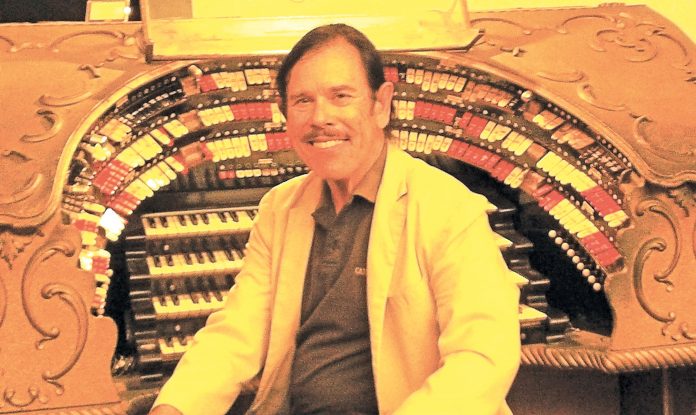Every time John Tusak steps into the world-famous Avalon Casino theatre, he follows in the footsteps of the world’s most famous musicians that have graced this incredible facility. Benny Goodman, Dizzy Gillespe and literally hundreds of famous artists have graced the palace constructed the during height of the Great Depression to entertain the people on this island resort.
Even so, Tusak belongs to a very small group of men that, while not nearly as famous, have played one of the most historic instruments in the world.
In fact, this marks the 20th year Tusak has entertained crowds at the Avalon Casino Theatre by playing the Page pipe organ for one hour before each movie. For movie-goers, it’s a show within a show and Tusak loves every note.
The massive Page organ that he plays is only one of two of it’s kind still in operation today. Instead of using electronics to generate synthesized sound, the massive organ uses old fashioned telephone relays to send sounds through massive tubes of air that run under the stage and up through the acoustically perfect theatre to a “cloud formation” that stretches across the ceiling and is covered by ornate artwork designed by renowned artist John Gabriel Beckman.
While today the Page organ is a musical relic, for its day, it was “state-of-the-art technology.”
“This is a living, breathing instrument,” says Tusak, pointing to the generators that create the massive air flow that it takes for the organ to create sound. Not just any sound, mind you,;deep, encompassing sounds that fill the Casino theatre with original music that penetrates the cells of the audience and gives them a unique musical experience.
The volume of the instrument is controlled only by bellows that limit the air passing through while the tone can be controlled by a collection of “horseteeth” keys that can be programmed to produce a nearly infinite variety of sounds.
The instrument is so unique it had to actually be built into the theatre during its construction in 1928 and 1929, when it opened on Memorial Day.
Wrigley’s theatre has a number of incredible features, one of which includes its original dome shape design that, even today, stands acoustically perfect.
Therefore, when Tusak unleashes tunes like “Phantom of the Opera,” the circulating sounds literally fill the air within the theatre much like doppler radar samples air across an area.
A native of Downey, California, Tusak was always interested in music. Along the way, he had many brushes with big stars, including going to “accordion school” with Weird Al Yankovich and attending high school with Richard and Karen Carpenter. Tusak played for years at the famed Orpheum Theatre in downtown Los Angeles until it closed.
He has always played music but began to focus primarily on playing the organ at the Avalon Casino theatre when in 1998, he got a chance to fill in for the organist, and later, when the Casino organist retired, to step into role the full-time.
“Doesn’t seem like twenty years,” says Tusak, looking back at his career. He still splits his time between Downey and Avalon and enjoys the mix of people that still comes to hear him play. Besides the many tourists who watch movies at the theatre, much of the contingent each night are local residents, who are still fulfilling William Wrigley’s dream of having a place to be entertained.
And, of course, there are still famous people dropping in. “Nicholas Cage was here the other night, somewhat disguised, “just hoping to enjoy the show and have nobody bother him.”
As long as the organ is maintained, Tusak says it could last forever. And he hopes that future generations will find someone to sit where he sits now to play one of the most original musical instruments ever made.
For now, however, Tusak has no plans to retire. Every note that comes from the organ, says Tusak, “is pure joy.”
And while crowds enjoy and applaud his every performance, it becomes very obvious that is perhaps impossible to enjoy this unique musical information more the musician sitting at the organ itself.










